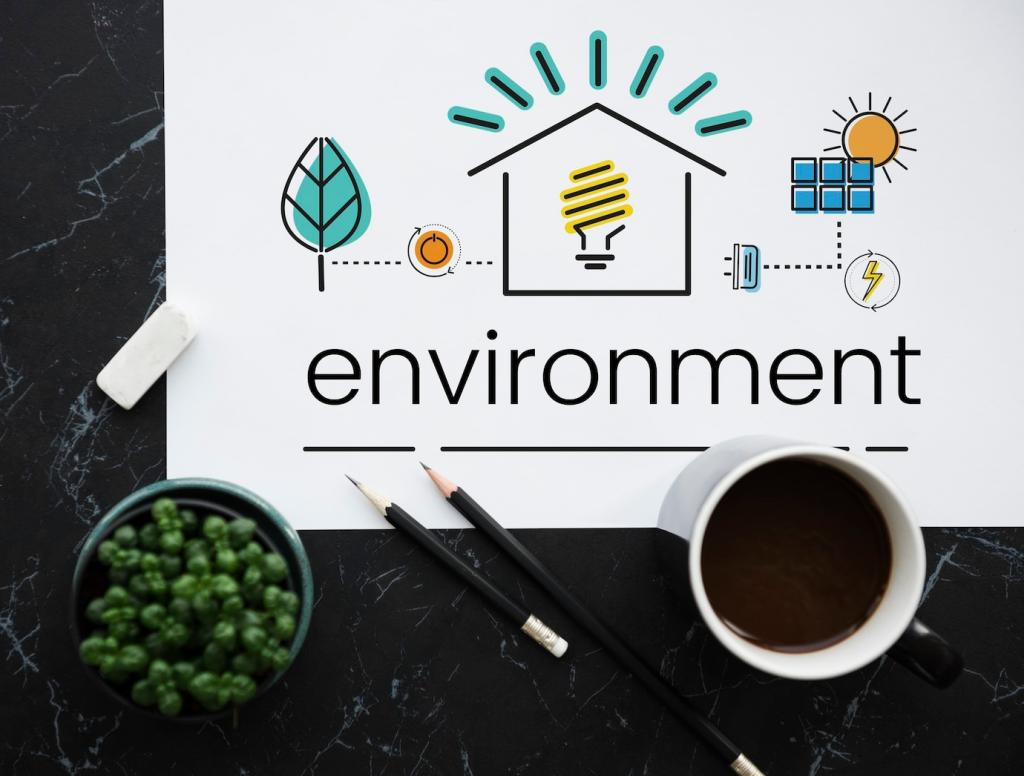
Solar Panel Integration for Residential Use
Solar panel integration for residential use has become an increasingly viable and popular solution for homeowners seeking to reduce their energy bills and carbon footprint. Modern advancements in solar technology mean that more households can take advantage of abundant solar energy to power their homes efficiently. Understanding how solar panels can be seamlessly integrated into residential spaces is essential for tapping into their full benefits. This comprehensive overview covers not just the basics of solar installation but also the essential steps, system types, maintenance considerations, financial factors, regulatory issues, and the future trends shaping the residential solar landscape.
Understanding Residential Solar Panels
Photovoltaic (PV) technology underpins the function of residential solar panels. This technology involves semiconducting materials, typically silicon, which generate an electric current when exposed to sunlight. Each solar panel consists of multiple interconnected PV cells that work collectively to convert solar radiation into usable electricity. The generated direct current (DC) is then converted into alternating current (AC) to power your household appliances. Understanding the science behind PV technology allows homeowners to appreciate both the simplicity and efficiency of modern solar power, making it easier to evaluate the system’s potential in meeting their energy needs.

Assessing Your Property’s Solar Potential
Every residential property is unique, and its suitability for solar integration depends on various factors such as roof size, orientation, pitch, shading, and local climate conditions. A comprehensive site assessment, often conducted by solar professionals, will evaluate the sun exposure throughout the year and identify any obstacles that could reduce solar performance. During this assessment, experts also check the structural integrity of the roof or ground areas where panels may be installed. With accurate information, homeowners can determine the optimum layout, maximizing sunlight capture and ensuring reliable energy production year-round.
Understanding System Sizing and Demand
Properly sizing a solar power system is one of the most critical planning steps. The right system size aligns closely with your household’s average electricity consumption, taking into account seasonal fluctuations and future changes such as electric vehicle adoption or home expansions. Professionals use historical energy usage data and site conditions to design systems that meet both current and projected needs. An undersized system could lead to reliance on the traditional grid, while an oversized system may not be cost-effective. Getting system size right ensures that you strike an ideal balance between investment and long-term savings.
Navigating Local Regulations and Permits
Residential solar panel installation is subject to local building codes, zoning laws, and permitting requirements. Navigating this regulatory landscape involves obtaining permissions from local authorities, complying with utility company policies, and, in some cases, adhering to community association guidelines. These requirements can impact system design, placement, and grid interconnection options. Homeowners benefit from working with experienced installers who can coordinate the permitting process, ensuring compliance, safety, and eligibility for available incentives. Being proactive in understanding and addressing the regulatory framework minimizes project delays and potential legal challenges.
Choosing the Right Solar System
On-grid solar systems are connected to the local utility grid, allowing homeowners to draw power from the grid when solar production is low and potentially feed excess energy back through net metering. Off-grid systems, in contrast, operate independently, typically relying on sizable battery banks for energy storage. Each setup offers distinct advantages. On-grid systems provide greater reliability and lower upfront costs, while off-grid systems offer energy independence and resilience in remote locations. Choosing between the two depends on your energy goals, location, and budget, making this one of the most important decisions in the integration process.
The Solar Installation Process
Site Evaluation and System Design
The first practical step in solar installation begins with a thorough site evaluation, where technicians assess roof condition, orientation, shading, and available space. This is followed by system design, tailoring panel placement, wiring, and components to your home’s unique features. Using advanced software, installers simulate solar performance and identify the optimal configuration. Collaborating with experienced designers ensures that your system will achieve maximum efficiency, reduce installation challenges, and blend aesthetically with your home’s architecture.
Installation and Grid Connection
Once the design is finalized and permits are in place, installation crews mount the panels securely on your roof or in ground arrays, connect electrical components, and integrate the inverter and, if applicable, battery storage. The process culminates in the wiring of your solar system to your home’s electrical panel and, in the case of on-grid installations, establishing a safe interconnection with the utility grid. Quality workmanship at this stage is vital for system safety and longevity. The installation phase also typically includes detailed inspections to verify compliance with local codes and standards.
System Activation and Testing
With the physical installation complete, the system undergoes comprehensive testing and commissioning prior to activation. This step ensures all components function correctly and safely, from energy production to grid interaction and battery operation. Installers may coordinate with utility representatives for final inspections and meter installation. Following successful tests, the system is officially switched on, allowing the household to begin generating and consuming solar energy. Detailed training and maintenance instructions are offered to help homeowners monitor and maintain optimal performance throughout the lifespan of their solar panels.
Maintenance, Monitoring, and Longevity
01
Routine Maintenance Practices
Solar panels are designed for durability, often requiring minimal regular maintenance thanks to their solid-state construction and weatherproof materials. However, periodic cleaning to remove dust, debris, bird droppings, or snow is necessary to maintain optimal efficiency. Homeowners should also schedule occasional professional inspections to check panel alignment, mounting hardware, wiring, and inverter performance. Staying proactive with maintenance helps prevent system degradation and costly repairs over time, guaranteeing consistent output and a maximized return on investment.
02
Monitoring System Performance
Modern residential solar systems are typically equipped with digital monitoring platforms that track performance metrics such as energy production, consumption, and grid interaction. These systems provide real-time data through web portals or mobile apps, enabling homeowners to spot irregularities or declines in output early on. Swiftly addressing any anomalies, such as faulty panels or inverter issues, is critical to minimizing downtime and lost savings. Monitoring not only ensures system reliability but also helps users better understand their energy consumption patterns and optimize energy use.
03
Lifespan and Warranty Considerations
Most solar panels come with warranties guaranteeing at least 80% output for 20 to 25 years, while some can last even longer with proper maintenance. Other system components such as inverters and batteries may have shorter lifespans and should be factored into long-term planning. Selecting reputable manufacturers and installers offering robust warranty terms and after-sales support is crucial for peace of mind. Understanding the lifespan of each system component allows homeowners to budget for eventual replacements as needed, ensuring continuous solar energy production over the system’s operational life.

The initial expenses associated with residential solar installation can be significant, covering equipment, design, permits, and labor. However, many households experience substantial electricity savings over the system’s lifetime, often recouping their investment within 7 to 10 years depending on local utility rates and system size. Advances in technology and increased market competition are steadily lowering installation costs. Understanding the balance between upfront investment and ongoing savings helps homeowners assess the overall financial benefit, ensuring that solar integration aligns with their household budget.

Federal, state, and local governments frequently offer a range of incentives to encourage solar adoption, including tax credits, rebates, and grants. In the United States, the federal investment tax credit (ITC) allows homeowners to deduct a significant percentage of installation costs from their taxes, while some states offer additional incentives. Utility companies may also provide financial rewards for energy produced or facilitate net metering arrangements, allowing you to sell surplus power back to the grid. Staying informed about available incentives is crucial for reducing upfront costs and speeding up the payback period for residential solar investments.

For many homeowners, upfront costs remain a hurdle. Fortunately, a variety of financing and leasing options have emerged to make solar more accessible. Solar loans allow for manageable monthly payments with ownership of the system, while leasing and Power Purchase Agreements (PPAs) enable households to benefit from solar energy in exchange for monthly fees, often with little or no upfront cost. Each financing model has its advantages and considerations in terms of savings, system ownership, and long-term value. Carefully evaluating options ensures the chosen approach aligns with your long-term financial goals.

Interconnection Standards and Safety
Connecting your residential solar system to the local utility grid requires strict adherence to interconnection standards and safety protocols. These standards regulate everything from system voltage to anti-islanding protection, ensuring the seamless flow of energy between the home and the grid without jeopardizing the safety of utility workers and residents. Installers must work closely with utility companies and local authorities to complete interconnection agreements, system inspections, and compliance tests. Ensuring your system meets or exceeds these standards is critical for operational safety, longevity, and access to net metering benefits.

Net Metering Policies
Net metering is a pivotal policy that enables homeowners with grid-connected solar systems to receive credits for surplus electricity sent back to the grid. These credits offset electricity drawn from the grid during periods of low solar output, significantly reducing overall energy costs. However, net metering program availability and regulations vary widely by region, with evolving rules and caps potentially impacting financial returns. Staying informed about the latest net metering policies, eligibility requirements, and potential legislative changes is essential for optimizing your solar investment over the long term.

Community and Homeowner Association Guidelines
Apart from government regulations, residential solar integration may also be subject to community guidelines or homeowner association (HOA) rules, particularly regarding aesthetics, panel placement, and system visibility. Some associations have strict requirements that can affect design choices and installation timelines. Engaging with community leaders or HOA boards early in the planning process can help identify and address potential objections, ensuring smoother approval and compliance. By proactively navigating these unique local dynamics, homeowners can avoid conflicts and expedite project completion.
